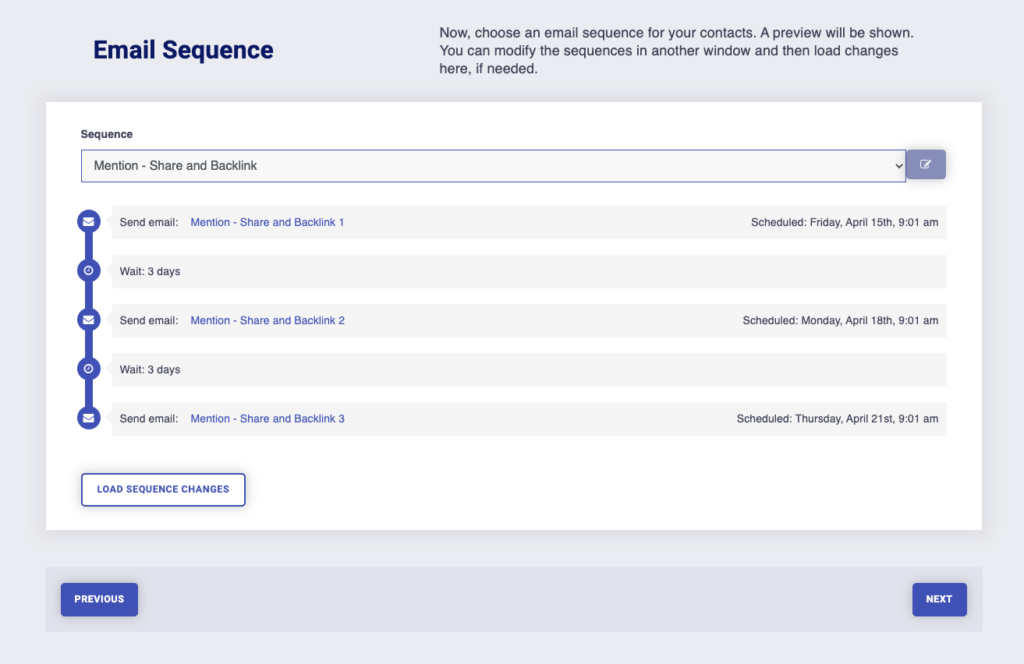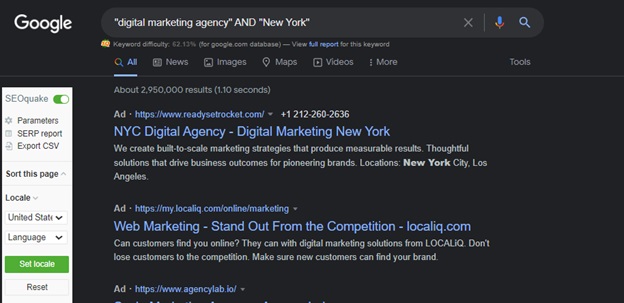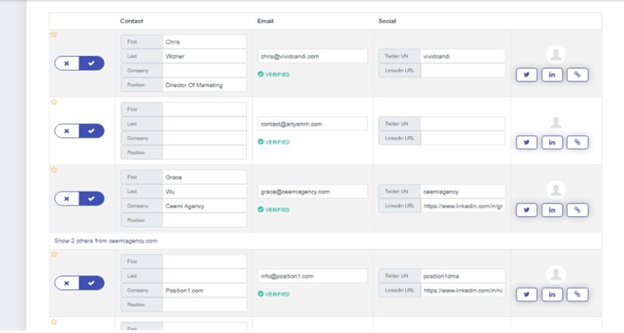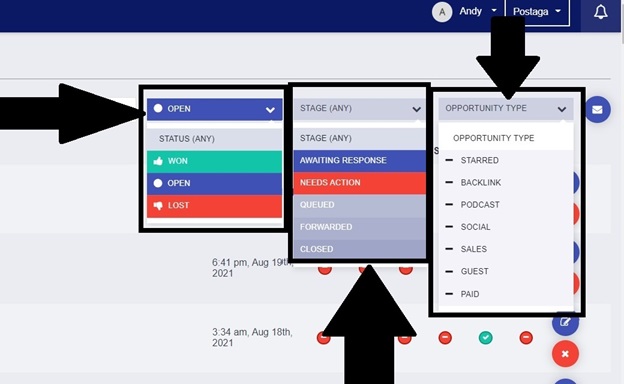Are you considering running email outreach campaigns to grow your business? Wondering how to do email outreach right?
I get it; prospecting, pitching, and reaching out to people left and right can be so darn demanding.
But here is the deal.
If you want to scale your business — grow your list, boost sales, or get more links to your website, you’ll have to get out of your comfort zone and connect with the right people.
In other words, you’ll have to run email outreach campaigns.
Luckily, there’s some good news, too – In this guide, you’ll learn everything there is to know about email outreach. You’ll discover the essential stages of outreach and learn how to execute a flawless outreach email campaign to improve your business relationships and revenue growth.
So, let’s take it from the top.
What Exactly Is Email Outreach?
Email outreach is the process of reaching out to someone via email to grow a relationship for a long-term purpose.
That goal could be practically anything – requesting a link, securing a guest blog opportunity, promoting an event, or seeking a sales or collaboration opportunity.
And needless to say an important part of any business growth strategies. Because, it doesn’t matter if you focus primarily on sales, lead generation through content marketing, or digital marketing, you will have to do email outreach.
What is an Email Outreach Campaign, Then?
An email outreach campaign is an activity of sending email outreach to your selected prospects to help you achieve the goal.
An email outreach campaign focuses on building prospect lists and then scheduling cold emails and their follow-ups to capture your prospects’ attention and get them to take the desired action.
Such an outreach campaign can be simple, consisting of a handful of messages, or complex, including conditional logic and changing the flow depending on the prospect’s behavior.

Understanding the stages of outreach helps ensure a streamlined campaign cycle, where the right thing takes place at the right time. You also stay on top of the ground rules through that. That way, you relate and connect with decision-makers better and ensure your campaign hits your goals.
How to Create a Successful Email Outreach Campaign?
A typical email outreach campaign can be divided into three main stages:
- Pre Stages of Email Outreach
- During Outreach Campaign
- Post Outreach Campaign
Let’s go through them in turn, and discuss how to use them in your campaign.
Pre-stage of Email Outreach Campaign
These are essential sequential steps you need to take before you run your email outreach campaign.
- Customer Persona
- Setting Goals
- Research
- Build Prospect List
- Email Collection
- Email Validation
- Prospect Segmentation
- Polish Your List
1. Creating a Customer Persona
Email outreach campaigns fail when marketers target the wrong people. The solution starts with building personas, semi-fictional representations of your potential customer.
A persona is a combination of the specific characteristics you want to see in your ideal prospects. When building a persona, don’t just focus on your prospect’s demographics, job, education, hobbies, and interests.
Think about your prospects’ pain points. What’s preventing them from reaching their goals? Are there solutions they have tried but failed? And finally, how can your offer help them overcome their struggles?
Armed with the above information, sending personalized emails that hit home with your prospects and motivate them to take your desired actions becomes easier.
2. Setting Your Goals
Another secret to acing email outreach is setting objectives and methodically working your way towards them. Goals shape what you say and how you say it.
Without setting goals and monitoring associated metrics, you’ll never know what works or not.
So, what are you looking for? A few podcasts? A couple of social mentions? Perhaps, you want to pitch a product or service that could help solve a particular problem.
Determine your goals, make them in writing for accountability and future reference. The trick is to make yourself accountable and avoid procrastination.
Characteristics of intelligent email outreach goals are:
- Specific– Described in detail
- Measurable– Have a metric assigned to them
- Attainable– Within your reach
- Relevant– They fit your business strategy
- Timely– Allocated adequate time frames and specific deadlines
3. Additional Research
You must first find where your prospects hang out to build an email list.
It’s mandatory to begin with companies that fit your niche. Your prospects might hang out on different social media platforms. Whether they hang out on LinkedIn, Twitter, or Instagram, you must put in the effort to research to get yourself familiar with their domain.
Trade publications, blogs, and other industry media are great places to find potential leads. Also within easy reach are local business directories and trade associations.
B2B and B2C companies use LinkedIn, so it’s still a valuable tool for reaching out to decision-makers.
Fun Fact! You can also conduct your research in Postaga once you figure out your customer persona, no need to scrape or pay for directory subscriptions. Instead, Postaga scrapes your prospects’ Twitter and LinkedIn profiles and presents it to you in an actionable manner.
4. Building the Prospects List
After identifying relevant target businesses for your email outreach goals, it’s time to put together a list of the decision-makers behind these companies.
TIP#1 You can leverage various tools to streamline your prospect list building, including CrunchBase, Deal Room, Angellist, and Built With. Directories may not come cheap, but these do guarantee volume.
These sites provide a vast amount of data based on location, company size, est date along with the lists of companies. You can filter the companies based on specific parameters.
TIP#2 You can look up each of these companies on LinkedIn and use available filters to generate a list of the organization’s employees.
TIP#3 You can also scrape results directly from google to build your domains list. For example, let’s say you’re looking for digital agencies in New York. Use SEO quake extension to set your locale. SEO Minion to scrape all the results on each page. Then clean your URL and paste the results in excel or sheet. Rinse and repeat to keep having fresh leads.

Everyone starts with a list of domains in the CSV files. Collected or selected prospects from directories or tools should all be in one place.
TIP#4 Everything can be done right inside postaga with the click of a few buttons. Postaga continuously scrapes live data finding you fresh leads; always.
5. Email Collection
You’ve crafted your customer persona and built your domain list.
Building an email list is the next part of the stages of outreach. But you’ll hardly find your prospects’ email addresses on About Us, Contact Us pages or LinkedIn profiles.
Fortunately, there exist email scrapers to ease this step, among them Hunter.
Use Hunter’s domain search feature to find the email addresses of multiple domains at a particular company. For example, you only need to type in the company domain, and Hunter will pull up a list of publicly available email addresses of the company’s employees, along with their names and roles.
You can use the email finder feature to find a specific email, but you’ll be required to input the prospect’s full name and company domain.
Postaga reduces the above process to a single step. First, look up companies in a particular niche and have the tool automatically scrape email addresses and links to LinkedIn and Twitter profiles of decision-makers that matter to your business.

6. Email Validation
The quality of your email list will have a direct and massive impact on the success of your email outreach campaign.
That brings us to the criticality of verifying every email address obtained from the previous step.
Hunter’s Email Verifier helps remove the guesswork out of email validation. It performs a complete check of professional email addresses and allows you to remove spam traps, catchall emails.
The next sensible course of action is eliminating the unverified email data from your list.
Fun Fact! Postaga has a built-in email validation process that identifies catchall, spam traps and automatically removes all the bad unverified emails from your campaigns.
7. Segmenting the prospects
The ticket to successful connections with decision-makers through email is personalization, and for that, segmentation is mandatory.
Segmentation is dividing prospects into smaller groups based on standard criteria. It’s based on the principle that prospects are inherently different from each other, which means a one-size-fits-all approach does not cut it.
Segmentation allows you to group your prospect with common pain points to craft personalized proposals that fit a specific group of prospects. It paves the way for a better understanding of your prospects, providing genuine value to your prospects, and getting higher response rates.
Segmenting contact lists is more straightforward in email marketing because prospects have expressed interest or provided information about them.
But how do you go about segmentation in email outreach?
Whereas you may not have much data about prospects you are trying to build relationships with, a few characteristics can make all the difference. First, try segmenting your audience based on at least two of the following quantifiers:
- Industry
- Specific Pain Points
- Level of experience
- Company Authority
- Company Size
- Location
- Domain DA or DR
8. Remove the Duplicates and Run the Campaign
An email list may contain duplicate emails, and this negatively impacts your campaign in multiple ways.
- Prospects begin to mark your emails as spam: Sending an individual two identical unsubscriptions. emails in a row areSo finally active and is a sure way to trigger spam filters and
- Reduced sender reputation: This originates from the previous threat. Low sender reputation also triggers spam filters, causing your emails to land straight into your recipient’s spam inbox.
- Hampered campaign performance: Landing in spam traps, higher bounce rates are outreach experts’ worst nightmare.
To prevent these issues, ensure no email contact makes multiple appearances across your email segments.
Once you clean your list, it’s time to get the ball rolling.
During The Outreach Campaign
You’ve launched your campaign. Finally, do you get to sit back and relax? Ughh nope, not at all.
1. Find Prospects’ Social Media
Having identified the individuals you want to reach, next is figuring out the social media platforms they frequent.
Not every platform is relevant to your business- people use these channels for different purposes and with different mindsets.
For B2B email campaigns, we always recommend LinkedIn and Twitter. They are the primary platforms where most decision-makers hang out to stay on top of industry-related updates and network with other industry authoritative figures.
You will need to research each of your prospects and find profiles. If you’ve done it already in previous steps and added their profile links in your CSV, then you’re in luck; if you haven’t, then now’s your time.
2. Pop Up In Your Prospect’s Social Channels
Following your target decision-makers on social media is not enough to forge meaningful relationships with them.
You’ll need to make yourself noticeable, not by requesting favors outright but by providing value.
Simple interactions like liking, sharing, and commenting on your prospect’s social posts demonstrate that you’re listening and care about what they care about. This also separates you from spammers and scammers.
Let your personality come through and show your prospects that you’re a human, not just another faceless corporation sending automated emails with bots. That means ditching drive-by comments (quick and unmeaningful comments) and taking your time to compose thoughtful responses that grab your recipient’s attention.
3. Monitor Your Campaign Stats
Your email outreach campaign stats indicate how well your campaigns are performing.
Available are various outreach tools that provide you with detailed analytics on the progress of email campaigns. For example, insights into individual emails help you track the success of different elements such as calls to action, link placement, and more.
Here’s an overview of a few helpful outreach email metrics:
- Delivery rate: The outreach tools can craft a percentage of emails that reach your prospects’ inboxes. For example, if you sent 300 emails, but only 250 were delivered, your delivery rate is around 83%.
- Open rate. It’s the percentage of emails opened by recipients. A high figure means that most of those who received your emails opened them. Common culprits of low email open rates include subject lines, send times, email deliverability, and frequency.
- Click-through rate (CTR). It indicates the number of people who clicked a link in your email. Factors that make or break email CTR include email length, copy persuasiveness, call to action, and link positioning.
- Bounce rate. This metric indicates the percentage of sent emails that come back as undeliverable. Reasons behind bounces include incorrect email addresses, temporary unavailability of the recipient’s inbox, or a browser or spam filter that prevented the email from reaching the recipient.
4. Take Action If Anything Goes Wrong
Just with any technology, problems can creep up with an email outreach campaign.
Among the top issues your need to plan for is an unforeseen campaign pause, which could result from:
- High email bounce rate
- Super low response rates
- Your email account reaching the sending limits stipulated by your email service provider
- Your email account got disconnected from your outreach tool.
You could have forgotten to remove catch-all, unverified emails, spam trap emails. Sending emails to these can lead to high bounce rates.
You could have forgotten to remove previous campaigns’ email addresses. This could result in breaking email laws; you could get marked as a spammer. Worst case scenario results in you getting sued.
Yes, mistakes happen to even the best of us. For example, you could have paused a campaign to fix something, then forgotten to resume it or schedule it. So don’t forget to keep an eye on it as well.
Your email hosting or outreach tool company might face 502, 429 or 503 code errors, have data accessibility issues, bad gateway or even servers can crash. Anomalies include too many requests, server overload, interruptions, and software updates.
Things to Do After Running The Outreach Campaign
1. How To Respond To Prospects The Right Way?
When engaging with prospects, strive to maintain a good impression.
You want to come across as friendly, but approaching prospects in a pushy or desperate way will work against that goal.
Here are pointers to respond in a manner that encourages meaningful conversations.
How Quickly Should You Respond To Prospects?
Your prospects don’t like waiting. If you don’t respond fast enough, they will focus on someone else trying to get their attention. The rule of thumb is responding to interested leads within two days.
How Do You Improve Your Responses To Leads?
Good responses mark the difference between good and bad prospect management. Find as much information as possible. Scalable response templates tailored to the most common questions your prospects ask can help speed up your response time.
Should You Send Batch Responses To Leads?
No, never do that. Prospects are willing to talk to humans, not bots. Sending batch responses shows your lack of effort. Personalization is a critical ingredient in getting responses. Customizing your messages to each prospect’s concerns, questions, and pain points brings you closer to your goal.
Is It Necessary To Respond To Every Lead?
Yes. Whether or not the conversations get prospects to take your desired action, invest time responding to every lead that contacts your business unless they’re not interested, unsubscribed or told you to stop.
How To Nurture Your Leads?
Once leads express interest in your business offers, you must do everything possible to win them over and close the deal to persuade them to complete the journey.
Nurturing builds confidence and trust, ultimately making your prospects feel they are making an informed decision by accepting your offer.
2. How To Manage Your Leads, The Right Way?
Lead management is the process of tracking how leads interact with your outreach campaigns, qualifying them, and engaging with them until they do what you want.
With a complete history of interactions in hand, you can quickly tell how an individual converts from a prospect to a lead and finally to a customer.
It’s mandatory to tag opportunities based on your type of campaign. It could be a sales campaign, backlink, social, guest post, or even a podcast campaign.
An opportunity is a lead with a higher probability of converting (becoming a customer or growth partner).
You must also stay on top of the lead statuses and stages.
Lead stages indicate the position of a target decision-maker in the buyer journey. Examples include:
- Need action: Requires immediate action
- Queued: Requires an action later on (often within 3-4 days)
- Closed: Requires no more action
Lead statuses indicate a lead’s ongoing relationship with your company. Examples are:
- Open: A lead you are trying to engage with
- Lost- has exited the sales funnel
- Won- has completed the sales funnel

Regardless of your choice of customer relationship management(CRM) platform, you will always have the same lead funnels to manage. CRM software houses all your lead activity and interaction in one place. It does the heavy lifting and identifies leads based on their engagement levels.
You don’t have to pay additional fees for Sales CRM tools like Salesforce if you subscribe to Postaga. Postaga has a built-in CRM to manage all your leads for sales, backlinking, or any sort of collaboration activities.
3. Negotiate Without Losing the Client
“Negotiation” is such a buzzword in business. It’s an art of persuasion; negotiation can help you close favorable deals without alienating or offending your potential customers. Provided you do it right.
Get started with the following tactics:
- Talk to the decision-maker
- Always listen and takes notes
- Let them speak first
- Set Your Ground Limits
- Provide value more than money
- Don’t get stuck with Price Ranges
- Refusing to Low Ball Offers
- Write terms Precisely
- Being human
- Learn when to walk away
4. Closed, What’s Next?
Now that you have completed virtually all stages of outreach, you should have closed at least 1% of the leads and converted them into clients.
So, if you started with 1000 leads, you should end up with at least ten clients.
What if your win rate is below 1%? If you did everything right by the book, then it means you have places for growth. You can scale your win rate up to 5%
Here are a few tips:
A/B Test Everything
A/B test is a comparison between two variations of something. The goal is to determine which version brings the best results.
To increase your response rate, A/B testing every aspect of your email outreach campaign, including subject lines, body copy, call to action, sending times, etc.
Test in Smaller Campaigns
Bigger isn’t always better.
Email outreach campaigns often don’t perform as well as they should because marketers aren’t running enough tests before launching large-scale projects. The reasons vary.
Some marketers have concerns about the time and cost of running enough tests. Minimize the possibilities of wasting time and money on non-performing prospects, strategies, and email copies. Start with a smaller group of recipients, and then leverage the winner campaign version for the rest of the list.
Under Promise, Overdeliver
It’s tempting to over-promise perks when trying to close leads, but that carries considerable risk. Customers will switch loyalty in no time if they feel cheated. That hampers your brand reputation and sales growth.
So, always promise less than what you can deliver and win their hearts by overdelivering.
Be Courteous
Your happiest customers are your most effective brand advocates. Send every customer a thank you note for their loyalty. A small gesture can have a significantcriteriaThis is because they impact.
Don’t Hard Sell for Upsales
Upselling aims at increasing the likelihood that a customer will take additional action. You can upsell by suggesting related products or by explicitly promoting other offers to your customers.
Upselling immediately after a sale can quickly turn customers off. Upselling too late after a purchase barely generates tangible results. The key lies in balancing timing and attitude.
Collect Comments
Customer reviews increase the perceived value of a product or service. According to Search Engine Watch, 88% of consumers trust online reviews as much as personal recommendations.
You don’t want to miss out on this market potential. Be proactive and request customers to leave reviews on review sites like G2, Trustpilot, Google My Business, Yelp, etc.
Ask for referrals
Let word of mouth work its magic, but you have to push to get started. When you exceed clients expectations, they’re more likely to recommend you.
They might not do so as well. All you have to do is ask, and chances are they’ll be more than happy to oblige.
Take Everything From the Beginning
Reengineering email outreach campaigns can feel frustrating, but it’s a perfect opportunity to apply lessons learned during your previous attempt. It’s about revising and re-examining the entire process and answering the question: “How can I do it better?”.
Conclusion
Creating email outreach campaigns takes time, dedication, knowledge, and the right tools. Sure, turning this concept into a reality is a whole other beast, but we hope the above checklist will help you tame it.
Talking of the right tools for the job, Postaga takes care of the hard work for you. Gather and organize your contact list and reach out to the right people at the right companies with personalized emails that inspire action. Cloud-based reporting and analytics give you actionable insights into your campaign performance, so you make confident data-backed adjustments.
Free 14-Day Trial
Start building relationships now with your fully-featured 14-day trial!
How We Compare
Terms | Done-For-You Terms | Privacy | Write For Us | Press
© 2024 Postaga. All Rights Reserved. Made with 
